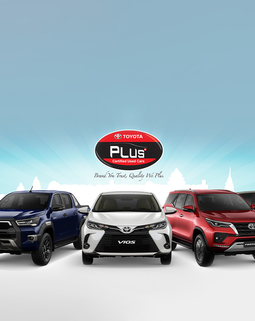The automotive industry is poised for a potentially record-breaking year as passenger vehicle sales are forecasted to reach 4.2 million units, signalling robust growth and recovery from the challenges posed by the COVID-19 pandemic. This projection comes amid positive economic indicators, shifting consumer preferences, and pent-up demand in key markets. In this article, we explore the factors driving the surge in passenger vehicle sales and the potential implications for the automotive sector.
1. Strong Economic Recovery And Consumer Confidence:
The anticipated surge in passenger vehicle sales reflects a broader economic recovery and increased consumer confidence following the disruptions caused by the COVID-19 pandemic.
With vaccination efforts underway and restrictions easing in many regions, consumers are more willing to make big-ticket purchases, including vehicles. Improving economic conditions, job growth, and disposable income levels further support consumer spending and drive demand for passenger vehicles.
2. Pent-Up Demand And Deferred Purchases:
The resurgence in passenger vehicle sales can be attributed to pent-up demand and deferred purchases from previous periods of economic uncertainty. Many consumers postponed vehicle purchases during the peak of the pandemic due to financial concerns, lockdown restrictions, and uncertainty about the future.
As economic conditions stabilize and confidence returns, consumers are now fulfilling their deferred buying intentions, contributing to a surge in vehicle sales.
3. Shift In Consumer Preferences And Mobility Needs:
The pandemic has accelerated shifts in consumer preferences and mobility needs, influencing the types of vehicles being purchased. With remote work arrangements becoming more common and travel patterns evolving, there is a growing demand for versatile and adaptable vehicles, such as SUVs, crossovers, and electric vehicles. Consumers are prioritizing features like spacious interiors, advanced technology, and fuel efficiency, driving sales in these segments.
4. New Product Launches And Innovation:
Automakers are capitalizing on the surge in demand by introducing new models and innovative features to attract consumers. The industry is witnessing a wave of new product launches across various segments, including electric vehicles, hybrid models, and connected cars. These offerings cater to evolving consumer preferences for sustainability, connectivity, and convenience, driving excitement and anticipation in the market.
5. Supply Chain Resilience And Production Capacity:
Despite challenges posed by supply chain disruptions and semiconductor shortages, automakers have demonstrated resilience and adaptability in managing production and meeting demand. Manufacturers have implemented strategies to mitigate supply chain risks, optimize production processes, and prioritize critical components to ensure continuity and efficiency.
In conclusion, the forecasted surge in passenger vehicle sales to 4.2 million units signals a remarkable rebound for the automotive industry and underscores its resilience in the face of adversity. As economic conditions improve, consumer confidence strengthens, and new products hit the market, the outlook for the automotive sector remains positive.





